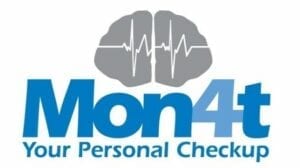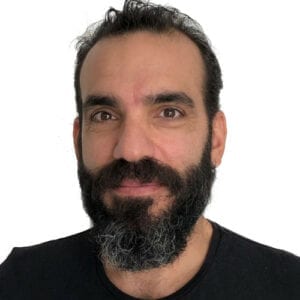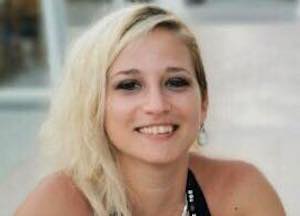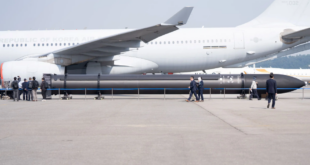by Viktoria Urban

The Israeli startup medical company providing remote neurological monitoring through a smartphone application is among the selected few technologies that will go into space in early 2022.
The Ax1 team’s “Rakia” (Sky) mission led by Axiom Space, the Ramon Foundation and the Israel Space Agency in the Ministry of Science and Technology, will leave for the International Space Station (ISS) to spend 200 hours above Earth while astronaut Eytan Stibbe conducts – among other experiments – motor and cognitive self-tests using Mont4t’s mobile application, sending the results back to Earth in real-time.
 The FDA approved Mon4t was co-founded by electrical engineer and brain scientist CEO Ziv Yekutieli, PhD and Dima Gershman, CTO, an Information Systems Engineering expert, CMO Peter LeWitt, Professor of Neurology at Wayne State University School of Medicine, Director of the Parkinson’s Disease and Movement Disorders Program at Henry Ford Hospital. Mont4t’s advisory board includes Professor Hagai Bergman, Chair of Brain Research, Hebrew University, Senior Researcher, Department of Neurosurgery, Hadassah Medical Center, President – International Basal Ganglia Society and Paul Friedmann, Professor of Clinical Neuroimmunology at Charité Universitätsmedizin Berlin.
The FDA approved Mon4t was co-founded by electrical engineer and brain scientist CEO Ziv Yekutieli, PhD and Dima Gershman, CTO, an Information Systems Engineering expert, CMO Peter LeWitt, Professor of Neurology at Wayne State University School of Medicine, Director of the Parkinson’s Disease and Movement Disorders Program at Henry Ford Hospital. Mont4t’s advisory board includes Professor Hagai Bergman, Chair of Brain Research, Hebrew University, Senior Researcher, Department of Neurosurgery, Hadassah Medical Center, President – International Basal Ganglia Society and Paul Friedmann, Professor of Clinical Neuroimmunology at Charité Universitätsmedizin Berlin.

SpaceWatch.Global contributing Editor Viktoria Urban interviewed Dr Ziv Yekutieli following their successful application for the mission.
How did you come up with the app itself?
The app actually started in the office of professor Hagai Bergman when we were talking about chips to put into people’s head as this was something I was doing as part of my master’s degree and PhD. Essentially what he told me was that what physicians needed before having new devices or drugs, are means to improve the use of treatments, as they had little idea of what was going on in patients’ natural lives. He mentioned tremor as one of the symptoms they would like to monitor remotely and I showed him how a smartphone could be used to measure that. This is how it started.
This is a holistic approach, as your app measures gait, tremor, it evaluates the range of motion, it has a tapping test and voice analysis, it monitors executive functions, memory, response time and the affective aspects of the brain; I do not think there is anything like this on the market. Do you want to make this the norm in medical society?
Yes, because neurology lacks the standard way of evaluating symptoms and is subjective for the most part, based upon the physician’s observation. When the patient leaves the clinic, there’s hardly any way to monitor these symptoms and obtain real-world data. Mont4t offers an accessible solution for clinics, physicians and the medical industry to use and get quantitative and accurate endpoints. To the data we extract, we add medical records we obtain, from the hospitals and physicians that we work with: the drugs used, genetic information, brain scans etc, all of this is fed into one big database.
People will have to be using their smartphones for the app to work. Are all the phones the same? Are they all reliable?
No, they’re not the same but the challenge is for us to align all of them. People hold their devices in a different way, there are different devices, different operating systems, different languages. It’s up to us to calibrate the devices, and we know how to align everything to match. It was either this, or allowing only one specific device to be used which would have been a lot simpler for us, but limiting for the physicians and patients.
Can you explain briefly how the test works?
Yes. First of all, physician sends a prescription to the patient, defining the test protocol. This is done by sending a simple text message. The patient gets a reminder to open the app and conducts the prescribed test protocol. Running the test protocol works like a media player with similar buttons: you can run the test, skip the test, redo it etc. For each test, the patient gets instructions in the preferred language plus there are graphical instructions. When the tests are done either at the clinic or at home, the results are fed back to a portal that the physician has access to, so that they can observe the trends and changes over time, and get alerts if anything in the condition of the patient changes There is also an option to add passive data collection, that provides other digital markers, from analysing the natural behaviour of the patient – a lot can be learnt from the way we walk, text and handle the smartphone.
I understand that you use AI and machine learning to analyse data but is there anyone else monitoring these to see if everything is going well or is it up to the physician to decide whether the data is real and useful?
Most of the data is analysed automatically, we do run a sanity check on a regular basis, and for every abnormal result. When a new test is being developed, we run an extensive QA process, validate it against neurologists’ ratings, and in dedicated laboratories, some of these results are already published and proven to be very accurate.
I know that the data are encrypted both at transfer and at rest and that you do not store personally identifiable information but how long do you store the data for?
For a minimum of seven years but they will very likely be stored forever unless we are asked to delete them.
Can the app be used anywhere in the world?
Yes, but now not only in the world.
Yes, you are going to space, that is great news. This mission is a great achievement, so congratulations. How did your app end up going to space?
I have always been interested in space. I think after the brain, space is the most fascinating subject. I heard about this mission and that Eytan was willing to take experiments into space with him so there was an open call. We thought that it would be interesting to monitor him while he was out there and then applied and got accepted.
Aren’t you going to have problems because of microgravity?
There are some tests that we cannot conduct in space like we cannot evaluate gait at the space station. We only chose tests that are relevant for these conditions. We know that we can evaluate tremors, do the tapping test, voice analysis and cognitive condition check regardless of gravity.
Are you going to test him before he goes into space and compare the data in the end?
Yes. Hopefully, we will be able to monitor more than just him as they are going into quarantine before the flight to make sure that they are healthy and we hope that during that time we will be able to evaluate not just him but the entire crew. Microgravity and space conditions affect the brain in many ways. The fluids in the body and in the brain, sleep changes, pressure, confinement, oxygen levels, there is a lot that will affect the brain. We will monitor how much these conditions alter the brain functionality, and then how much time it will take to recover.
How often will you make him do a test? Will you make him do all the tests every day?
Yes. It takes a couple of minutes and he will do them once per day. If people want to have long space missions like going to Mars, which has very weak gravity, you need to make sure that the people you send over will be able to function properly, otherwise, it’s going to be a disaster, so it is very important to have an accessible solution for evaluating the entire range of brain functionality.
How will you use the data coming from this experiment to develop your app?
For the most part, all the tests are there and developed but we don’t know entirely how microgravity is going to affect the raw data. I believe once we know it, it will improve our algorithm further and also it will sharpen some problems that we don’t spend a lot of time thinking about here on Earth.
How will you get the data from there to Earth? What is the route of transmission?
There is a connection between the ISS and Earth already so we are hoping to have access to this communication channel. On top of this, we have some backup ideas to store the data on the smartphone and retrieve it when they land.
Is NASA likely to approve this experiment?
A few weeks ago we went through the first evaluation committee to talk about the technical aspects and we addressed all their questions. They have already launched laptops, tablets, so this doesn’t seem to cause any risk, it is lightweight, it doesn’t take up a big space in space, it doesn’t consume a lot of energy which is also something that they have to keep in mind.
Are you going to publish the data you retrieve from space?
Of course, but the problem is that even if we monitored the entire crew, it is a very small number of people so it’s very difficult to get substantial scientific understanding from such a small sample. We will publish whatever we can though. If the app works and they adopt it, then we can make it accessible for all future astronauts.

Viktoria Urban, contributing Editor at SpaceWatch.Global: After graduating as a Journalist from Edinburgh Napier University, I am now doing an Astronomy and Planetary Science degree at The Open University (Scotland) which has enhanced my already existing love and enthusiasm for space. I am also a member of and a volunteer for several societies both in Hungary and in the UK and write online content on space for multiple companies as well. I hope my science communication will encourage many to find a job in the space sector, whatever their background and highlight important issues to ensure a sustainable space environment for future generations.





